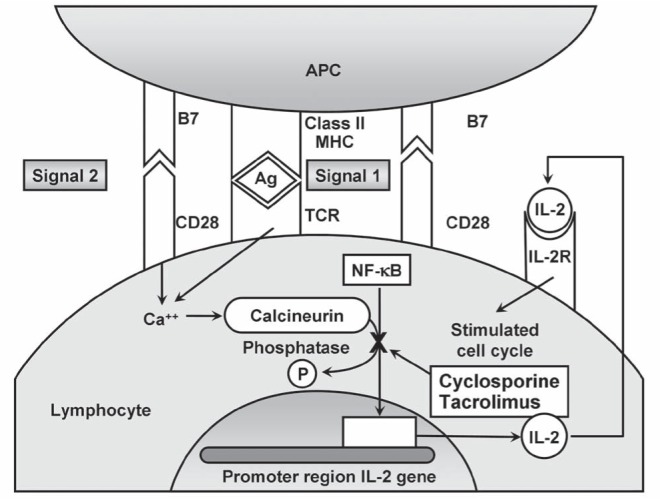Figure 1).

Mechanisms of action of calcineurin inhibitors within lymphocytes. Lymphocyte activation requires recognition of the antigen (Ag) presented by the class II molecule of the major histocompatibility complex (MHC) on the surface of the antigen presenting cell (APC) by the T cell antigen receptor (TCR) of the lymphocyte (Signal 1). Binding of the B7 ligands on the surface of the APC to CD28 molecules on the surface of the lymphocyte completes the second costimulatory signal (signal 2) and activates the lymphocyte. Lymphocyte activation releases calcium (Ca2+), which activates calcineurin and stimulates lymphocyte proliferation. Cyclosporine and tacrolimus each block calcineurin-mediated activation of nuclear factor-kappa B (NF-κB) via a phosphatase (P) pathway within lymphocytes and thereby impair production of interleukin (IL)-2. Activation of the IL-2 receptor (IL-2R) is impaired; cell cycles are stalled; and lymphocyte proliferation is blunted
